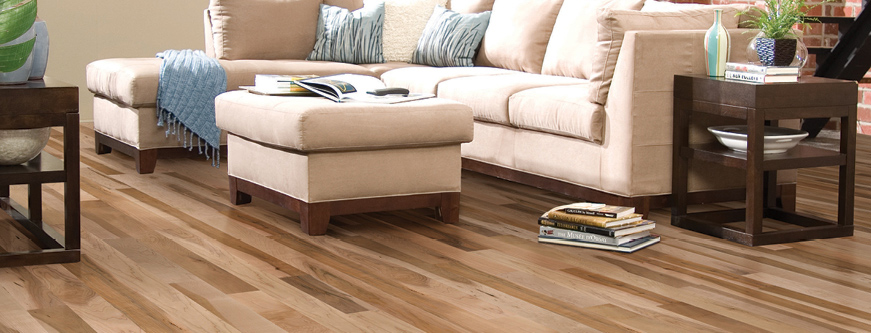In today's world of flooring options, choosing the right hardwood can be a hard decision. You might know that you want to install hardwood in your home, but where to start? The many options that are available can make it a difficult task to narrow down your preferences. But don't worry, we're here to help.
There are many benefits to installing hardwood, including adding value to your home, but with the many characteristics that different types of wood have, some can be more suitable for certain styles than another. Here are some hardwood basics that will help you choose the right type of wood for your needs.
1. Fabricated or Authentic?
The first choice to make is whether or not you need real hardwood floors, or if you're open to engineered hardwood. Real hardwood flooring is made up of individual planks of pure wood. Engineered hardwood has three to five layers of real wood that have simply been laminated together. While most people cannot differentiate between the two without comparing pieces of it, the biggest difference between the two is usually the cost, with the engineered wood being the more affordable option.
2. Do you like grain?
Another major factor to consider is what species of wood you would like to install. The most common and popular for their durability and ability to stain well are oak, maple, and hickory. All three types of wood stain well to most colors, light or dark. However, oak and maple are lighter woods that have a subtle grain to them, whereas hickory can be quite distinctive with the dark grainy pattern and knots that will show through on a lighter stain. All three types of wood are very durable in nature, which accounts for the popularity of each.
3. Light vs. Dark.
Stains can range from light to dark with everything in between, including tones in honey or cherry. The more medium tones are generally best suited for more traditional rooms, with the darker and lighter stains ideal if you are looking for a contemporary or modern look. Much like anything else, lighter floors will make a smaller room appear larger, whereas darker flooring will give a room a cozier feeling.
4. Planks.
Hardwood planks, both real and engineered, come in a variety of widths ranging from narrow to wide. Narrow widths of about 2.5" are more common for a classical feel, and planks 6" or wider are ideal for a rustic and casual style. Smaller planks have the ability to fill a modest room and lend it the appearance of space, while larger boards can fill an open room with texture and give an airy space character and a more intimate feel.
5. Finishing touches.
Another thing to take into consideration is the spacing or positioning of your hardwood planks. Hardwood can be cut at an angle at the edge so that when it's laid down, more or less of a gap will be in between each board. A slightly larger gap will help hide any unevenness and also lend a more "country" charm. Also consider whether you would like to install the hardwood in the traditional plank-over-plank way, or maybe oppose tradition and think about a stylish chevron or herringbone pattern. You can also use hardwood pieces of the same type with different widths for a subtle, variable effect.
After everything is said and done, the only thing left to figure out is whether or not you want to polish your floor to a high sheen to mimic a wet look, or to keep it buff for a more homey and casual approach. Either way, in any size or color, hardwood is a beautiful addition to any property that is sure to welcome and impress friends and family alike.
To see our hardwood inspiration board, visit us on Pinterest.
For contests and more great article links about interior design and style, find us on Facebook & follow us on Twitter @floorsnowcanada




